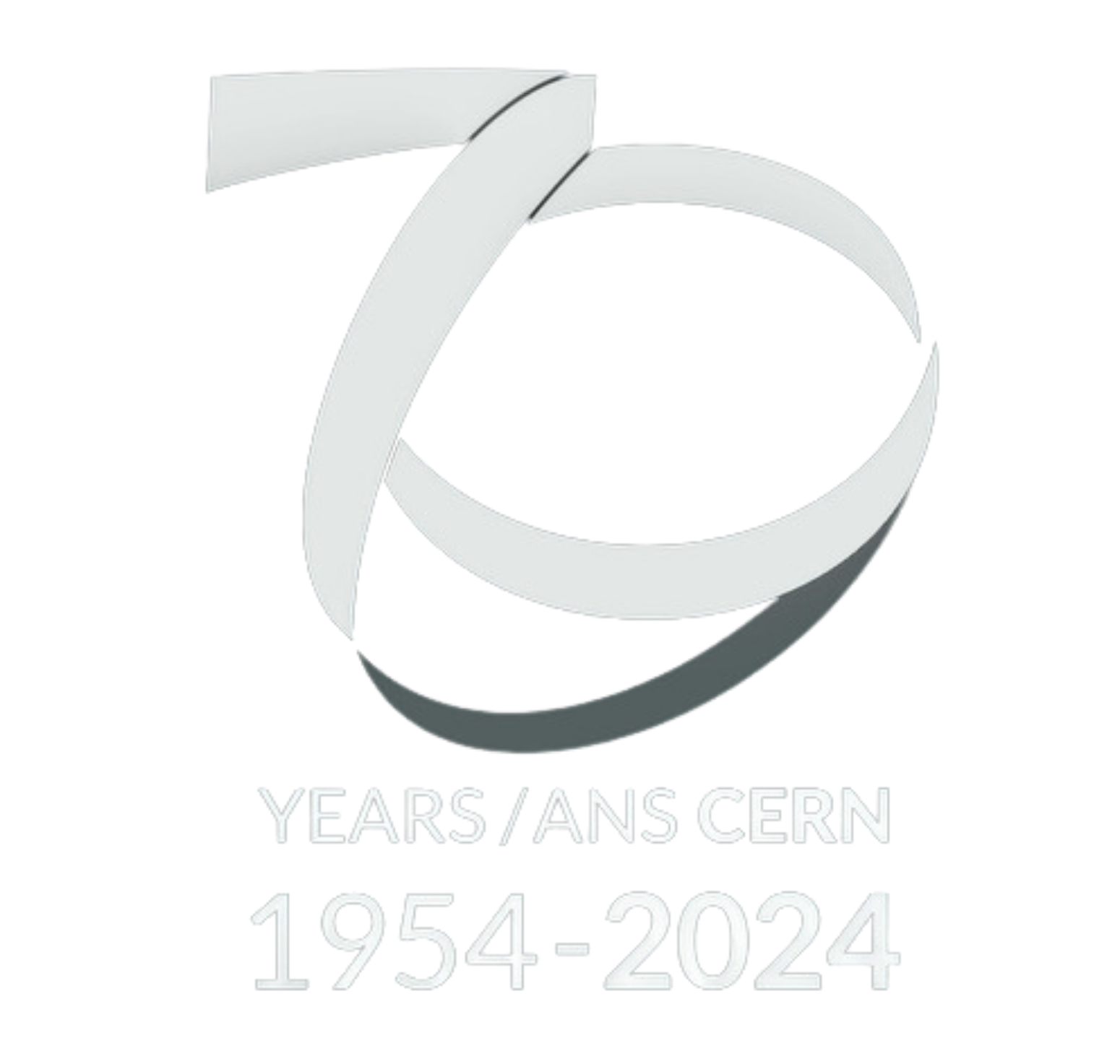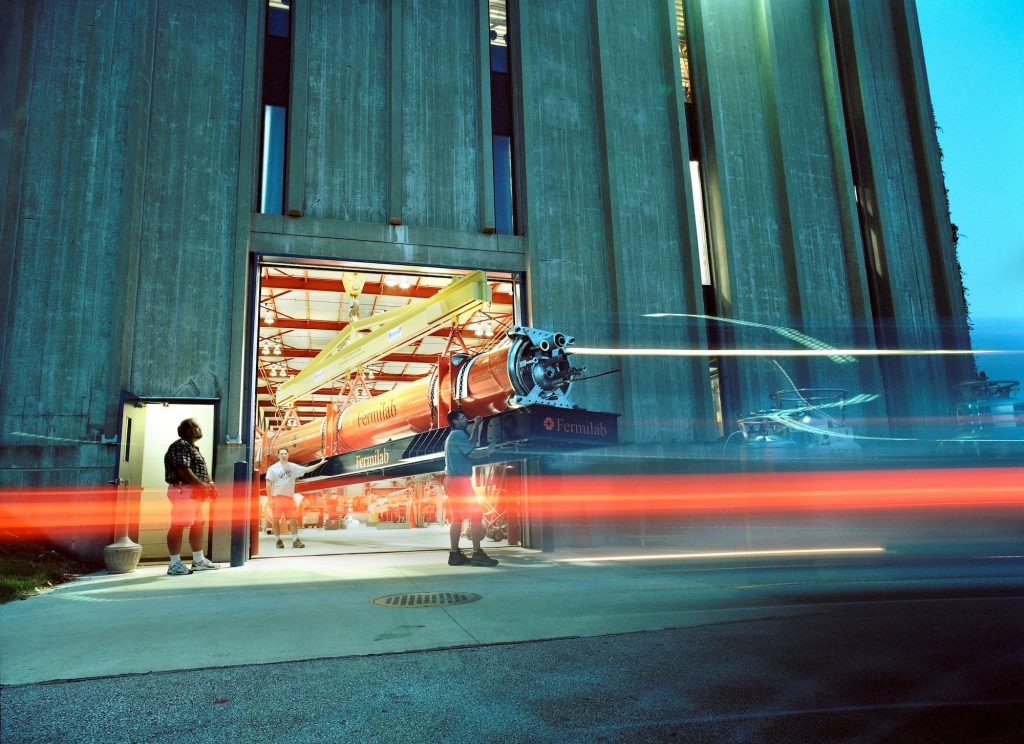
The beginning of the Large Hadron Collider (LHC) dates back to the early 1980s. CERN’s major accelerator, the Large Electron Positron Collider (LEP), was still in its study phase. But scientists were already considering using its 27 km tunnel for a proton collider.
Hadron colliders were indeed extremely promising. CERN had developed revolutionary techniques with the ISR, the world’s first proton–proton collider in the 1970s and was preparing a proton–antiproton collider that was to offer a major discovery in 1983. On the other side of the Atlantic, a gigantic superconducting supercollider (SSC) project was taking shape.
The LHC was officially launched at a symposium in Lausanne in 1984. The consensus was quickly reached on a high-luminosity machine – with a high number of collisions – to compensate for the lower energy compared with the American mega project. This constraint meant using two very intense proton beams and therefore two rings of magnets. In addition, achieving the required magnetic field meant using innovative superconducting magnets.
These requirements led to the adoption of an ambitious “two-in-one” magnet design: two superconducting coils surrounding the two beam tubes within a single mechanical structure. The superconducting material chosen was niobium-titanium, enabling a magnetic field higher than 8 Teslas, and therefore a collision energy higher than 10 TeV for the protons. The choice of superconductivity meant that the magnets had to be cooled to -271°C using superfluid helium.
After several years of development, prototype magnets were operating successfully in 1994. At the same time, ideas for experiments were taking shape. At a meeting in Evian in 1992, scientific teams submitted their first proposals, laying the foundations for future major international collaborations and their detectors.
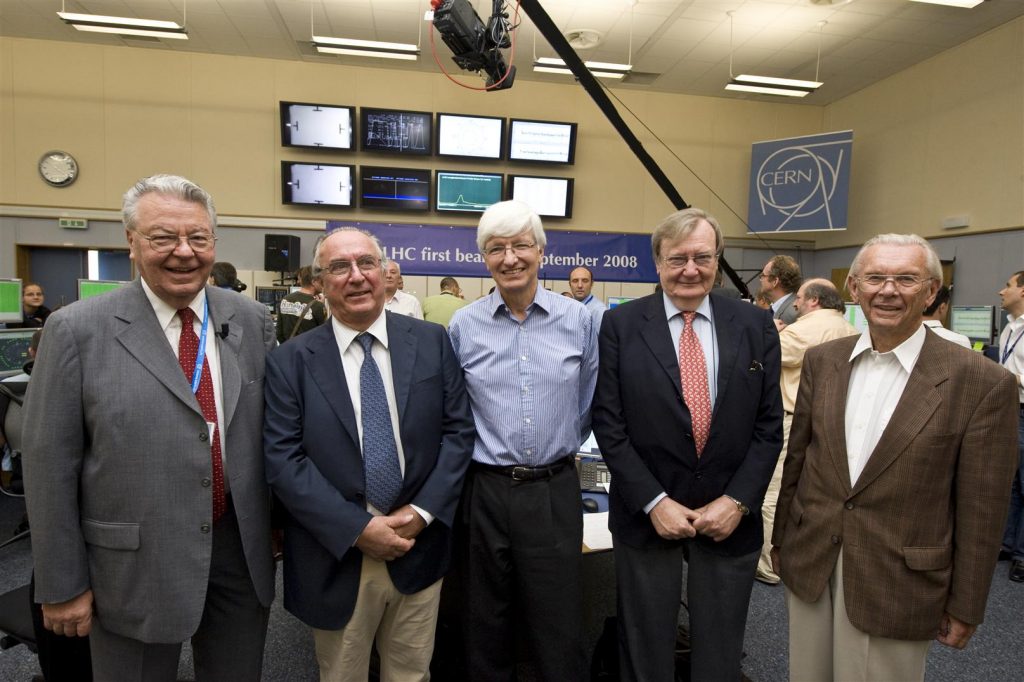
But the scientific community and CERN’s Member States still had to be convinced. Carlo Rubbia, Director-General of CERN between 1989 and 1994, was one of the great promoters of the LHC, winning the support of the particle physics community in Europe. Consensus was harder to achieve among CERN’s Member States. At the end of 1994, the CERN Council approved the LHC, but in two stages.
This option was largely impractical, but a major event the previous year was to unblock the situation. The US Congress had halted the SSC project, leaving the LHC alone to conquer the high-energy frontier. To raise additional funds, the CERN management, led by the new Director-General Chris Llewellyn Smith, conducted an intense diplomatic campaign with non-Member States of CERN, including those involved in the SSC project. Canada, India, Russia and Japan signed participation agreements. At the end of 1996, the Council approved the construction of the LHC in one stage. In 1997, the United States joined the project.
Hundreds of people were now working on a project of unprecedented complexity: 9000 superconducting magnets to be produced, the world’s largest cryogenics system, an ultra-sophisticated power-supply system, and millions of sensors and other components manufactured by around a hundred companies worldwide. Production in industry proved to be particularly arduous, with inevitable technical and financial ups and downs.
On 10 September 2008, the LHC started up in front of the world’s cameras. Unfortunately, nine days later, a faulty interconnection brought the machine to a halt, causing major damage over 600 metres. After 14 months of repairs and improvements, the LHC was successfully restarted and the LHC research programme began on 30 March 2010. Since then, the machine has gained in energy and luminosity, enabling many crucial advances in our understanding of the infinitely small.
Recollections
I had been asked to lead the LHC project in 1993, before it had even been approved. I guess I was naïve to have accepted!
Lyn Evans
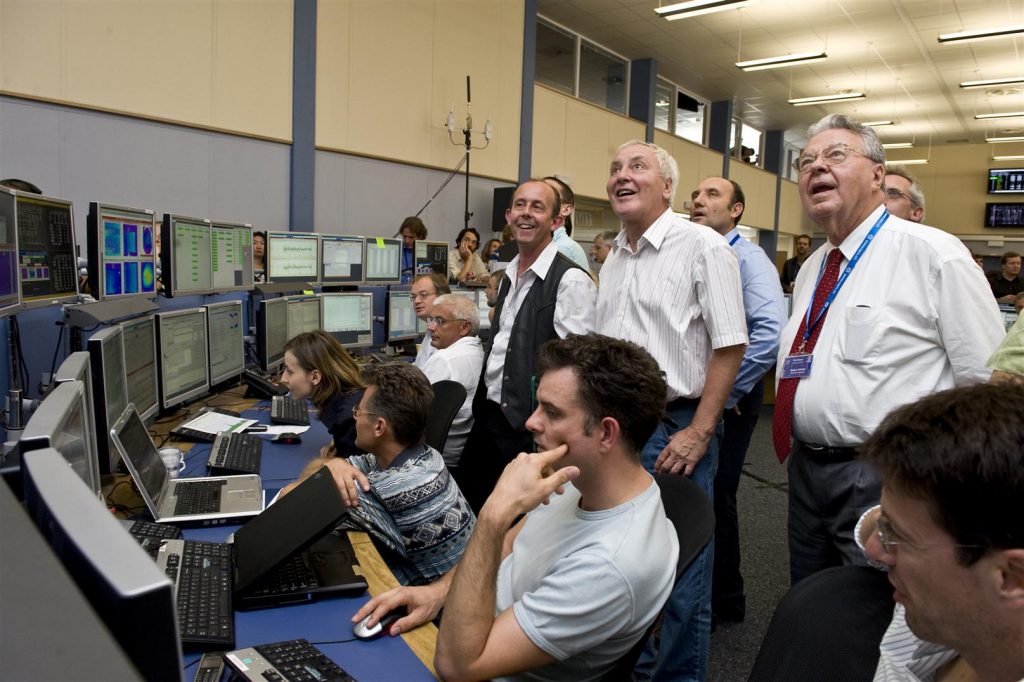
Lyn Evans came to CERN in 1969 as a research fellow, before becoming a staff member in 1971. He was LHC Project Leader from 1994.
“I’d never wanted a public switch-on for the LHC, but there’d been a big build-up and there was this nonsense about blowing up the Universe. It was at a time when the web and social media were sufficiently well established for news to travel widely, and there was enormous concern. So, we had no choice, we couldn’t just get beam and then announce it. But there were risks to being so public: the night before the switch-on, the cryogenic system stopped working and we only recovered it in the morning of 10 September 2008, just before we could start up the beam!
Nobody could have imagined it would work so quickly. For LEP, in 1989, it took two months to commission. For the LHC, it took just two hours!
The screen showed one spot when the beam entered the LHC and it was supposed to show a second spot when the beam made a full turn. I thought it hadn’t worked, because there was a delay, but then we saw the two spots, even three spots as it had gone around twice. The room erupted in applause, it felt like a football match!
The LHC project had spanned the mandates of four Director-Generals and each of them was perfectly timed. Llewellyn Smith’s diplomacy helped to get the project approved. Maiani’s physics background helped to convince a reluctant physics community to stop LEP, to make room for the LHC. Aymar’s engineering background meant he fully understood the reality of the manufacturing issues, and he saw the project through to the end. When the physics programme began in 2010, Heuer was in charge.
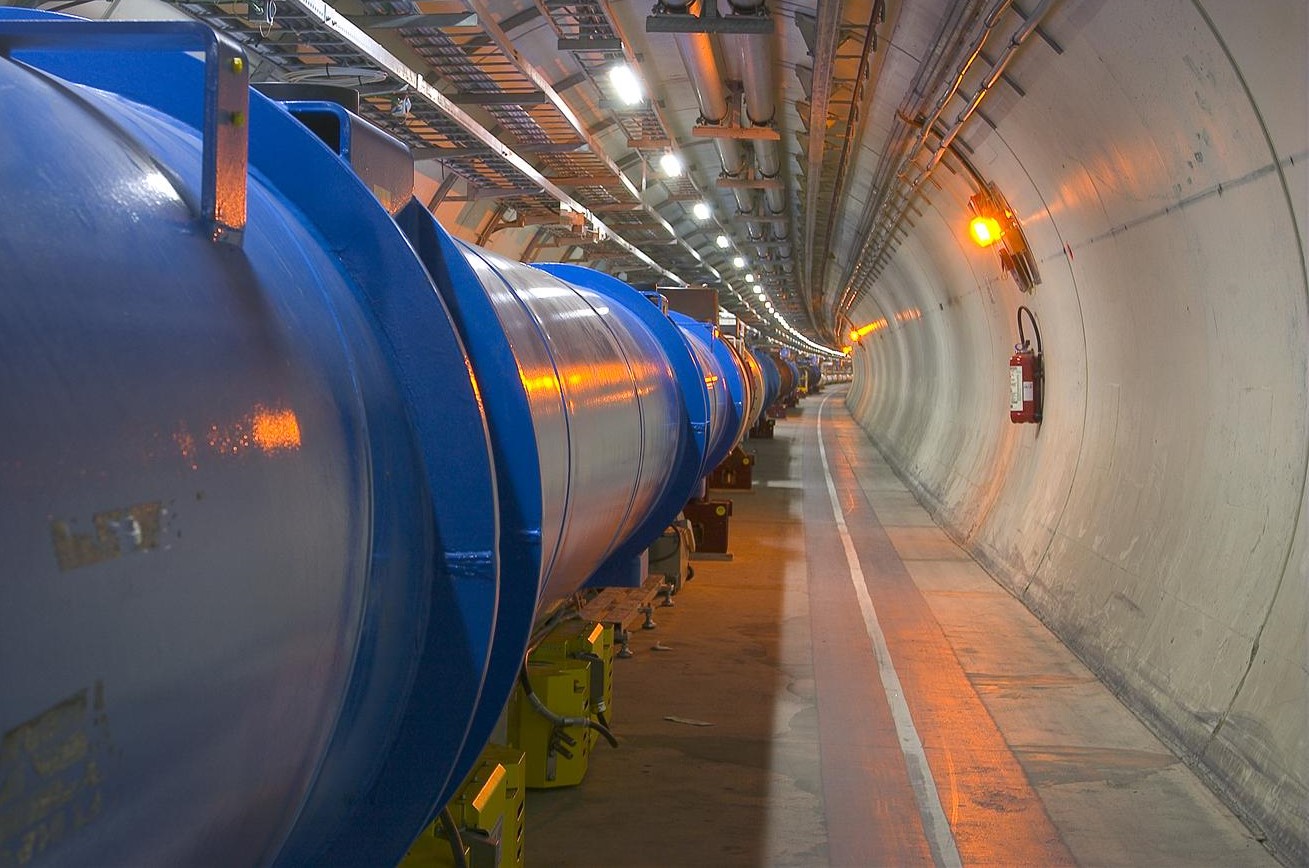
I had been asked to lead the LHC project in 1993, before it had even been approved. I guess I was naïve to have accepted, but I’d been division leader already and, alongside other tasks, I’d worked on initial designs since the 1980s, when the first ideas for the LHC came up after a meeting in Lausanne.
It was a 15-year construction project, with plenty of challenges along the way. Four suppliers went bankrupt. We had warehouses all over the Pays de Gex with components for magnet building, to have a buffer in our supply chain. The project was based on a just-in-time installation, but a one-year delay in the cryogenic line meant that we had hundreds of magnets above ground, waiting to be installed, in car parks, exposed to the elements. Every time I took an aeroplane, I’d look out of the window and see a sea of blue dipoles!
Before the switch-on, we had taken seven sectors to full energy, but there hadn’t been time to do the eighth. There were 10 000 high-current joints between the magnets, and we knew that the weak point could be the interconnections. We’d even calculated the risk of failure and had a probability of 10-4. But bear in mind that 10-4 x 10 000 = 1 and, indeed, on 19 September 2008, nine days after the switch-on, we saw where the failure was. It happened around lunchtime; I was with Human Resources discussing contracts and got a call. I immediately went to the CERN Control Centre (CCC) and saw all the screens were red! One joint had failed and the relief valves weren’t big enough for the overpressure. It knocked about 50 magnets out of alignment. We had spares to make the repairs, but it took about a year.
Looking back now, I’d say that the incident was a blessing for the LHC experiments. It gave them extra time to use cosmic rays to calibrate their detectors and make simulations, so when we switched the LHC back on in 2010, we were able to ramp up much faster.
What the incident showed me is that there’s something about the people at CERN: when the going gets tough, the tough get going. Everyone sprang into action and used ingenuity to make it work. It’s like that at CERN, we quickly solve issues as they arise.”
Read more about the day the world switched on to particle physics and how the LHC is now defying expectations by rivalling lepton colliders for precision in the CERN Courier.
